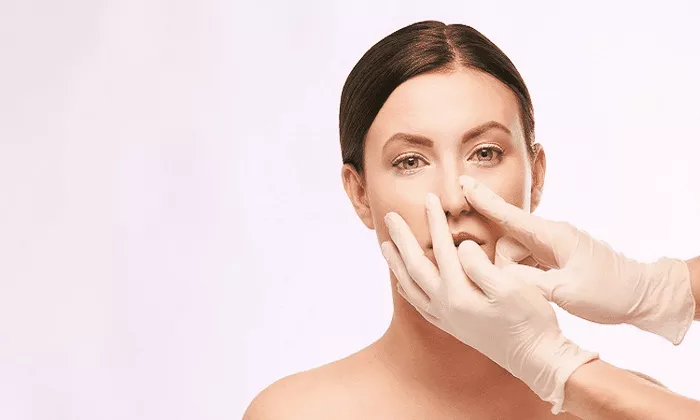Rhinoplasty, also known as nose surgery, is a common cosmetic procedure that can help to improve the appearance and function of the nose. After rhinoplasty, patients may have questions about the recovery process, including how long stitches will stay in place. In this article, we will discuss the answer to this question and provide tips for a smooth and successful recovery after rhinoplasty.
What is Rhinoplasty?
Rhinoplasty is a surgical procedure that is used to reshape the nose. The procedure can be used to correct a variety of issues, including a crooked nose, a hump on the bridge of the nose, a wide nose, and a drooping or bulbous tip. Rhinoplasty can also be used to correct breathing problems caused by a deviated septum or other structural issues.
During the procedure, the surgeon will make incisions either inside the nose or on the outside of the nose, depending on the type of rhinoplasty being performed. The surgeon will then reshape the bone and cartilage of the nose to achieve the desired results. After the procedure, the patient will be given instructions for recovery and care.
Recovery After Rhinoplasty
Recovery after rhinoplasty can take several weeks, and it’s important to follow your surgeon’s instructions carefully to ensure a smooth and successful recovery. Here are some tips for a successful recovery after rhinoplasty:
Rest and Relax – It’s important to rest and relax as much as possible during the first week after rhinoplasty. Avoid strenuous activities and exercise, and try to keep your head elevated as much as possible to reduce swelling.
Take Pain Medication as Directed – Your surgeon may prescribe pain medication to help manage any discomfort after rhinoplasty. Take the medication as directed and avoid taking any additional pain medication without consulting your surgeon.
Use Cold Compresses – Applying cold compresses to the nose can help to reduce swelling and bruising after rhinoplasty. Use a clean, soft cloth or ice pack wrapped in a towel and apply it to the nose for 10-15 minutes at a time.
Avoid Blowing Your Nose – It’s important to avoid blowing your nose for several weeks after rhinoplasty. Blowing your nose can increase swelling and may cause bleeding.
Keep Your Nose Clean – Your surgeon will provide instructions for cleaning your nose after rhinoplasty. It’s important to follow these instructions carefully to prevent infection and promote healing.
Stitches After Rhinoplasty
Stitches are used during rhinoplasty to close the incisions made by the surgeon. The type of stitches used will depend on the type of rhinoplasty being performed and the surgeon’s preference. In most cases, dissolvable stitches are used, which will dissolve on their own over time.
Dissolvable stitches are made from materials that will break down over time and be absorbed by the body. This means that they do not need to be removed by the surgeon, and they will not leave any visible scars. The length of time that dissolvable stitches take to dissolve will depend on the type of material used and the location of the stitches.
In some cases, non-dissolvable stitches may be used during rhinoplasty. These stitches will need to be removed by the surgeon at a follow-up appointment. Non-dissolvable stitches are typically used in areas of the nose where dissolvable stitches may not be strong enough to hold the tissue together.
How Long Do Stitches Stay In After Rhinoplasty?
The length of time that stitches stay in after rhinoplasty will depend on the type of stitches used and the surgeon’s preference. In most cases, dissolvable stitches will stay in place for several weeks before they dissolve on their own. This means that patients do not need to have their stitches removed by the surgeon.
Non-dissolvable stitches, on the other hand, will need to be removed by the surgeon at a follow-up appointment. This appointment is typically scheduled for 7-10 days after the procedure. During the appointment, the surgeon will examine the incisions and remove any non-dissolvable stitches that are still in place.
It’s important to follow your surgeon’s instructions carefully regarding the care and removal of stitches after rhinoplasty. This will help to ensure a smooth and successful recovery and minimize the risk of complications.
Conclusion
Rhinoplasty is a common cosmetic procedure that can help to improve the appearance and function of the nose. After rhinoplasty, it’s important to follow your surgeon’s instructions carefully to ensure a smooth and successful recovery. Stitches are used during rhinoplasty to close the incisions made by the surgeon, and the length of time that stitches stay in place will depend on the type of stitches used. Dissolvable stitches will dissolve on their own over time, while non-dissolvable stitches will need to be removed by the surgeon at a follow-up appointment. If you have any questions or concerns about the care and removal of stitches after rhinoplasty, be sure to contact your surgeon for guidance and support.

